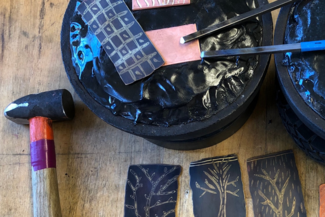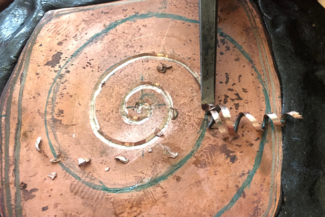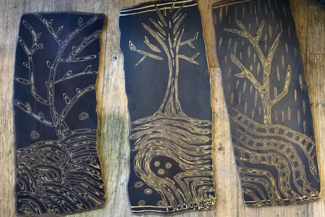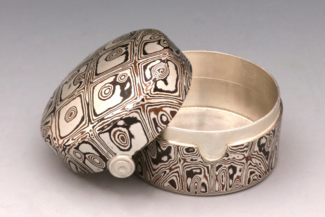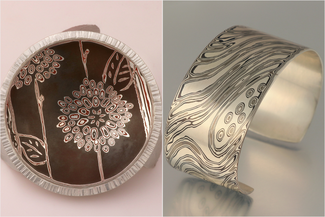Traditional Mokume Gane Chisel Patterning
Mokume Gane is an ancient Japanese technique that uses fused layers of different metals to form unique organic patterns. This class starts at the patterning stage; we’ll dive into chiseling, which is the most traditional way of patterning mokume gane. Patterns can be abstract or representational and informed by the student's own aesthetic; the design possibilities are endless.
Students will secure their work in pitch or use lower cost alternatives, and then learn to properly use, sharpen, and even make their own chisels. On the last day students can make their own chisel and/or focus on turning their patterned mokume into simple finished jewelry. This workshop is a great follow on for those who have taken previous mokume gane classes, but it is also open to those new to mokume gane. Participants can expect to create multiple patterned samples and/or finished jewelry depending on their interests and experience level.
Meet the instructor

Anne Wolf earned her MFA in Jewelry/Metals at San Diego State University in 1999. Based in San Diego, California, Wolf has been teaching online and in-person jewelry/metals courses and workshops since 2003. Her mokume gane metalwork has been shown across the U.S. and in international locations such as Hanau, Germany and Tsubame, Japan. Wolf has studied under Japanese metalwork masters such as Ford Hallam, Hiroko Sato-Pijanowski, and James Binnion.
Materials & Tools
There is a $150 materials fee for this class that is payable to the instructor upon the first day of class. The materials kit includes:
- 3 copper/brass mokume blanks ready to pattern
- Precision patterning chisel
- Chisel blank
- Sandpaper, polishing cloth
- Sanding discs and mandrel
- Small tin of Renaissance wax
- Closed-toe shoes - required in the Metalwerx studio
- Safety glasses
- Ear protection
- Closed-toe shoes
- 6” ruler, extra-fine Sharpie, pen and notebook
- Measuring calipers; digital or dial
Optional:
- Hand vise (Such as this one from Micromark)
- Optivisor /magnifying device

